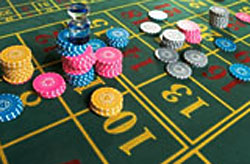The famous mathematician Leonardo Pisan was born in Pisa in 13th century. He is known worldwide as Fibonacci as he is related to Bonacci family. He was highly interested in mathematics from early childhood and developed his skills greatly. Fibonacci managed to solve the most complicated tasks in mathematics and became the great scientist.
Fibonacci theory

Fibonacci theory is simply a sequence of numbers. However, these numbers are not random, every next number in this sequence is the sum of two previous numbers. The Fibonacci numbers are sometimes called a progression as they constantly increase. The sequence of these numbers exists in nature in reality. It can be applied to many aspects of the life. So, the Fibonacci system is 1 - 1 - 2 - 3 - 5 - 8 - 13 - 21 - 34 - 55 - 89 - 144 - 233 - 377, ….
How to apply Fibonacci system in roulette?
Many roulette betting systems were created in order to help players to predict the outcomes of the game. Everyone knows that roulette is a game of chance and every roulette spin is an independent event with no influence on the next outcomes but still players hope to increase their chances on winning with the help of them.
One of the most popular systems is Martingale roulette strategy as well as Fibonacci strategy. The latter is less risky and players cannot meet the table limit. It can be used for even-money bets like black/red, even/odd or high/low numbers. So, let us consider the principles of applying Fibonacci theory to the roulette game. The first bet refers to the first number in the sequence and in case of the lose it is necessary to place the sum that equals to the second number in ht sequence. That is happening until a players wins. In this case the previous two numbers are crossed of the sequence and a player bets that number that has left. It seems to be complicated but it's easier when considering the example:
$1 - loss - $1 - loss - $2 - loss - $3 - loss - $5 - loss - $8 - win - 8 and 5 are crossed - $3 …and so on. The system is over when a player comes to the first number in the Fibonacci sequence.

